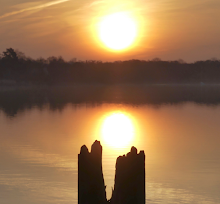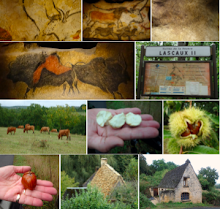Today we crossed most of Himmerland from north to south. This region was the home of Cimbrians about 2000 years ago. They became famous because they (and their neigbours the Teutones) migrated from Jutland southwards into Roman controlled territory, and clashed with Rome and her allies. The Cimbrian War (113-101 B.C.) was the first time in 100 years that the Roman Empire and Rome itself had been seriously threatened.
Back to the present. We biked along the beautiful coast of Nibe Bredning and passed through the small and hyggelicious town of Nibe.
This week, all over and everywhere the white hawthorns are blooming so overwhelmingly. The sweet smell of nectar (honey) is in the air.
No doubt here: The west wind comes from the right and shapes the front of the woods.
The meadows south of Halkær Bredning were very lush and beautiful.
The large farm at Halkær Mølle (water mill) was a thatched beauty in a very picturesque area.
Close by Halkær Mølle, a meadow sported hundreds of flowering early-purple orchids (Orchis mascula); – a memorable moment for any botany aficionado.
Farther south along the old railway traché turned bike path, we saw this stone cist (storstenskiste) built by forefathers of the Cimbrians about 4500 years ago, during a period that we now call Late Stone Age (Sen Bondestenalder).
The interior of the stone cist.
Around lunch time we arrived at Aars, the main town in Himmerland.
We spent half-an-hour in front of Peder's bakery munching and drinking, before we continued on bike route 29 to Farsø.
And here it is: Søndergade 48 in Farsø, the birthplace of Johannes V. Jensen, the famous Danish author who was awarded the Nobel Prize in Literature in 1944. Most unfortunate, however, the museum was closed.
Johannes was exceedingly productive during his life as an author. Among his most famous historical novels are Kongens Fald (The Fall of the King) and Den Lange Rejse (The Long Journey).
Unbeknownst by most, the northernmost land on this planet is named Johannes V. Jensen Land. It is a large and High Arctic area around 82°N in Greenland, neighbouring the Arctic Ocean and the closest terrestrial region to the North Pole.
Late in the afternoon we shopped for dinner and breakfast at Gedsted (Goat's place) and pedaled the last 8 kms to our accommodation at a cosy stud farm raising thoroughbreds.
– – –
Tomorrow (Ascension Day) we will head north to visit the island of Fur, world famous for its deposits of 55 millions-years-old diatomaceous earth (aka kieselguhr).






































